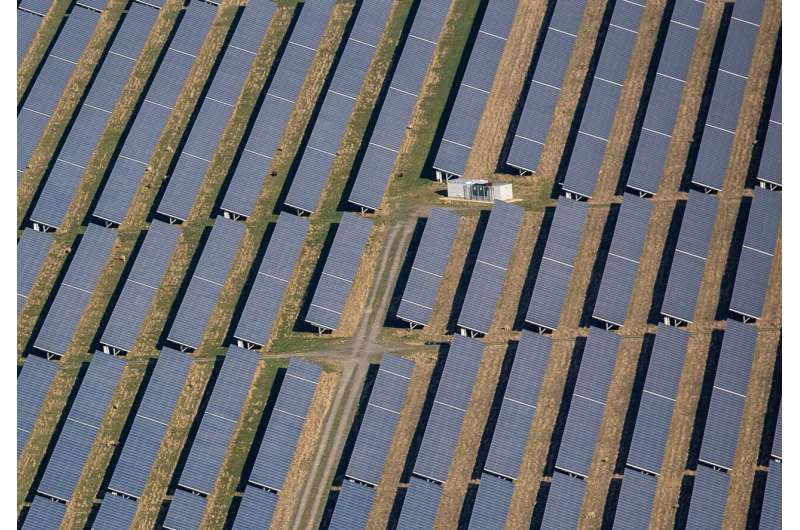
Dramatically expanding climate-action policies across all levels of government, sectors of society and the economy could slash U.S. greenhouse gas emissions by 65% by 2035 compared to 2005 levels, according to a new report from the University of Maryland's Center for Global Sustainability (CGS).
Released on Wednesday at Climate Week NYC, the analysis compared current federal and state policies with more ambitious greenhouse gas-cutting versions. Those policy changes would include extending clean energy, clean transportation and energy-efficiency incentives in the 2022 Inflation Reduction Act and 2021 Bipartisan Infrastructure Law for five years.
With that action and strengthened non-federal policies supporting the clean energy transition, the U.S. could see massive expansions in solar and wind generation, electric vehicle sales, and use of electric-powered water and space-heating appliances.
If current laws and policies enacted during the Biden administration are rolled back, however, the report found that non-federal partners could prompt only a 48% emissions reduction by 2035—falling short of previous U.S. commitments to reduce greenhouse emissions at least 50% compared to 2005 levels by 2030.
The report comes as the United States prepares its 2035 nationally determined contributions (NDCs), the updated national climate action plan required under the Paris Agreement to prevent global temperature from rising beyond 1.5°C—the tipping point at which many scientists predict catastrophic climate change effects would accelerate.
"Our findings make clear that if the United States intends to address the climate crisis, it will need to take action at all levels of government and society, with action from businesses, cities, states and the federal government," said Ryna Cui, acting director and associate research professor at the Center for Global Sustainability, based in UMD's School of Public Policy. "The faster we move, the greater chance we have of addressing climate change, the great existential threat to our planet."
The CGS analysis and recommendations were informed in part by listening sessions with a diverse network of state and city representatives, private-sector leaders and industry groups, tribal nations, and higher education and health care organizations. These sessions were organized with the assistance of America Is All In, a coalition representing 5,000 members across the United States to meet and exceed climate-action goals.
Gina McCarthy, managing co-chair of America Is All In and former White House climate adviser, said that the nation is well on the way to meeting the U.S. goal to halve carbon dioxide emissions by 2030.
"As the U.S. prepares to release its next climate goals for 2035, I am confident we can go even further with the help of cities, states, tribal nations, businesses and institutions all across this country," she said.
More information: Toward 2035: Forging a High-Ambition U.S. Climate Pathway. cgs.umd.edu/research-impact/pu … n-us-climate-pathway
Citation: Study shows US can cut greenhouse gas emissions by 65% by 2035 (2024, September 26) retrieved 26 September 2024 from https://techxplore.com/news/2024-09-greenhouse-gas-emissions.html
This document is subject to copyright. Apart from any fair dealing for the purpose of private study or research, no part may be reproduced without the written permission. The content is provided for information purposes only.
